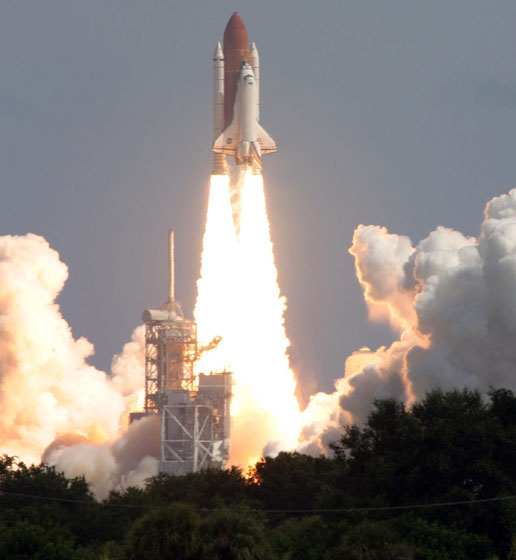
The middeck can be reconfigured by adding three rescue seats in place of the modular stowage and sleeping provisions. Stowage for the lithium hydroxide canisters and other gear, the waste management system, the personal hygiene station and the work/dining table is also provided in the middeck. The middeck contains provisions and stowage facilities for four crew sleep stations.
#Space shuttle atlantis windows
Six pressure windshields, two overhead windows and two rear-viewing payload bay windows are located in the upper flight deck of the crew module, and a window is located in the crew entrance/exit hatch located in the midsection, or deck, of the crew module. More than 2,020 separate displays and controls are located on the flight deck. The displays and controls on the left are for operating the Orbiter, and those on the right are for operating and handling the payloads. The on-orbit displays and controls are at the aft end of the flight deck/crew compartment.
#Space shuttle atlantis manual
Each seat has manual flight controls, including rotation and translation hand controllers, rudder pedals and speed-brake controllers. The flight deck is designed in the usual pilot/copilot arrangement, which permits the vehicle to be piloted from either seat and permits one-man emergency return. The two-level crew module has a forward flight deck with the commander's seat positioned on the left and the pilot's seat on the right. Outside the aft bulkhead of the crew module in the payload bay, a docking module and a transfer tunnel with an adapter can be fitted to allow crew and equipment transfer for docking, Spacelab and extravehicular operations. It consists of the flight deck, the middeck/equipment bay and an airlock. The 65.8-cubic-meter crew station module is a three-section pressurized working, living and stowage compartment in the forward portion of the Orbiter.

This area houses the pressurized crew module and provides support for the nose section, the nose gear and the nose gear wheel well and doors. The cockpit, living quarters and experiment operator's station are located in the forward fuselage. Payloads are carried in the mid-fuselage payload bay, and the Orbiter's main engines and maneuvering thrusters are located in the aft fuselage. The cockpit, living quarters and experiment operator's station are located in the forward fuselage of the Orbiter vehicle. About the same size and weight as a DC-9 aircraft, the Orbiter contains the pressurized crew compartment (which can carry up to eight crew members), the huge cargo bay, and the three main engines mounted on its aft end. The Orbiter is the centerpiece of the Space Transportation System (STS). Each of the five Space Shuttle orbiters built - Columbia, Challenger, Discovery, Atlantis and Endeavour - was designed to fly at least 100 missions.

The Shuttle launches like a rocket, maneuvers in Earth orbit like a spacecraft and lands like an airplane.

The Space Shuttle is the world's first reusable spacecraft, and the first spacecraft in history that can carry large satellites both to and from orbit.


 0 kommentar(er)
0 kommentar(er)
